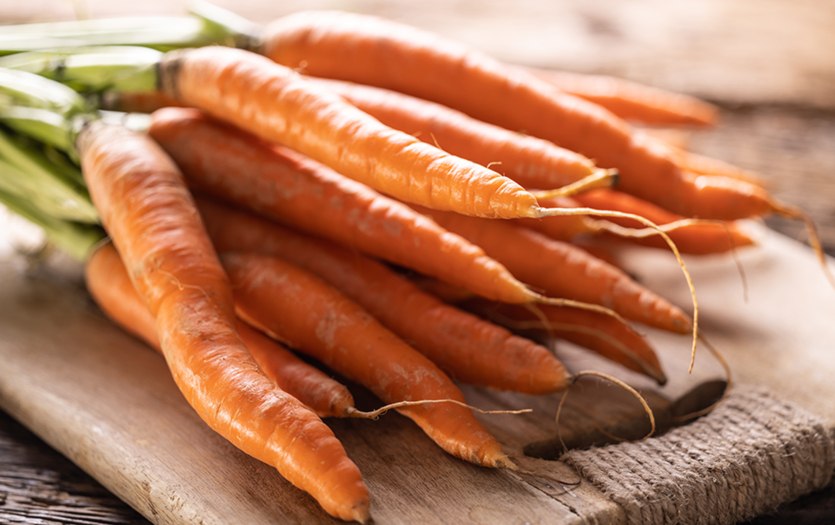
This post was written based off of a presentation by Rachel Stohlman, RDN, LD, community outreach dietitian, Parkview Health.
Fruits and vegetables are important pieces of the human diet because they provide fiber, phytonutrients, vitamins and minerals. The colorful power foods are even better plucked fresh from a garden, field or tree. We’ll talk about the overall perks of packing in the produce, with a focus on a popular pick–the carrot.
The protective effects of produce
Compared to processed foods, which are calorie-dense, fruits and veggies are nutrient-dense, which means you get maximum nutritional benefit in each bite.
The pros of these plants are impressive, and include:
- Proven to help lower risk of high blood pressure, heart disease and stroke.
- Could prevent some types of cancer.
- Provides nutrients needed for our immune systems to function at their best.
- Have positive effect on blood sugar and aid with weight maintenance (nutrient vs calorie).
Are you getting enough?
The data says that 9 out of 10 Americans do not get the recommended servings of fruits and vegetables in their daily diet. The recommendations are:
- Adults: 2 cups of fruit and 3 cups of veggies per day
- Children: 1 – 1 ½ cups fruit and 1 – 2 ½ cups veggies per day
The characteristics of carrots
Carrots are root vegetables (taproot), and their scientific name is Daucus carota. Other root vegetables include beets (taproot), onions (bulb), ginger (rhizome – plant that sends out roots and shoots from its nodes) and sweet potatoes (tuberous root).
Carrots are harvested from July to November, and are, ideally, selected when they are firm, evenly shaped and smooth with bright skin color. Avoid carrots with a cracked, rough or shriveled exterior, or that have green at the top.
Baby carrots are carrots that have been harvested, stems, leaves and debris removed, cut into 2-inch pieces, sorted by size, peeled and polished by rough stone rollers, weighed and bagged.
Keeping carrots fresh
When it comes to storing your carrots, there are some techniques that will keep them fresher, longer.
For short-term storage:
- Remove the stem and leaves
- Place carrots in a plastic bag with a damp paper towel.
- Store in the refrigerator for up to 2 weeks.
- Discard if slimy or soft.
Note: Baby carrots will not last as long in the refrigerator
For long- term storage:
- Freeze, can or dehydrate the carrots.
- Store unwashed in a cool, damp place (cellar or cold room)
- Cut off stems and leaves and pack in damp cloths. Use within a few months.
The nutrition profile of carrots
If you’re looking for an ingredient that will bolster the benefits of your meal, you can’t go wrong with carrots. They contain:
Carotenoids – Associated with lowered risk of developing degenerative diseases (such as cancer, cardiovascular diseases, cataracts and macular degeneration).
Vitamin C – Vital for immune and skin health.
Vitamin A – Important for eye and skin health and our ability to see at nighttime.
Vitamin E – An antioxidant that works with other antioxidants to offer protection from some chronic diseases.
Polyphenols – P-coumaric, chlorogenic and caffeic, which protect the body’s tissues.
Fiber – Important for gut health and healthy weight management.
Consuming carrots
Preparation is a matter of personal preference, but some of the best ways to consume carrots are:
- Raw
- In a stir-fry
- Sautéed
- Cut into rounds and cooked until tender
- Roasted (400 degrees for 25-30 minutes)
- Boiled (5 – 7 minutes)
- Microwaved (Put in ¼ cup water, cover, cook for about 5 – 6 minutes)
Carrots pair well with almonds, lemon, garlic, pecans, white wine vinegar, thyme and onion. If you’re looking for some new recipes to try, browse Pinterest for inspiration.



